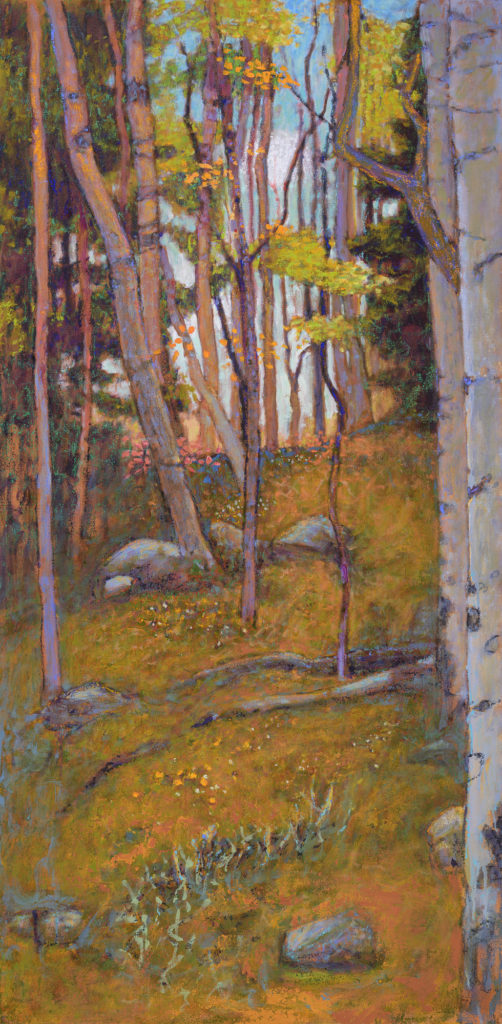American Art Collector | May 2015, Issue 115 | By John O’Hern
The Japanese poet Matsuo Basho (ca. 1644-1694) wrote, “Do not seek to follow in the footsteps of
the masters. Seek what they sought.”
Rick Stevens reveres the masters, but says, “You may copy them at first, but eventually you embody the principles and then improvise with endless variation.” He likens the process to tai chi, the ancient Chinese martial art, which he practices every day, mastering its forms and movements.
Stevens says, “It is natural to look for repeatable methods, and there is a mastery that naturally develops when one does something over and over again. In painting, there’s always a danger of the work getting formulaic. I want to get to fresh territory, even if it gets uncomfortable there. It’s part of what makes it engaging. I like the element of surprise—something that looks right once it’s been integrated into a piece, but something that takes it beyond the predictable. I want to make sure that I’m doing something that has endless variety, like nature itself.”
As a boy, Stevens would sit and watch his father as he painted in plein air and would spend hours hiking and canoeing. “I dropped out for a while,” he explains. “My parents had some property, and it was an opportunity to get away from everything.”
Today he hikes in the Sangre de Cristo Mountains in northern New Mexico, sometimes setting up camp, and always sketching and painting. He responds first to the light and “how it falls on forms. Different kinds of light change the visual experience.” Then sound. “You can’t deny how rich the sounds are away from human activity.”
“My work may be seen as an open window to other realms,” Stevens says. “Its visual vocabulary has evolved from years of painting the landscape. Although I no longer consider myself a landscape painter, nature continues to be my muse. I think of nature as a continuous flow of shapes and patterns of energy that has, or more precisely is, an intelligent force. Most modern-day physicists will tell us that all the forces and particles in nature are one, just different ripples on the ocean of consciousness: a Unified Field.”

An awareness of oneness is evident in his paintings as well as in his life. “A sense of structure is important to me, but I avoid strong divisions,” he shares. “I require a certain ‘fluidity’ where everything is flowing into the next thing. My compositions are infused with an overall light that is all-inclusive. This doesn’t allow anything to be read as separate from the whole. There is diversity, just like in the natural world, but there is an underlying unity that is apparent.”
Unlike the abstract expressionists, his abstract paintings suggest space and landscape. As he navigates the line between representation and abstraction, he is completely at ease. “I don’t fight it, I play with it. It brings a sense of mystery,” Stevens says. When asked what “mystery” means to him, he replies, “It’s something that inspires us. It awakens something inside us that we may not understand, but that harkens to a greater reality. Some call it a spiritual experience. Others experience a sense of awe in nature or listening to a piece of music and don’t know why, but they may not call it spiritual. Art awakens something within us.”